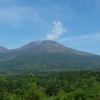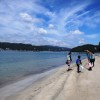Let ‘s meet dolphin, whale, subtropic forest, and other unique endemic species living in a solitary island in the distant ocean.
Ogasawara island chain that has never been a part of continent is a bonanza of endemic species with unique evoltions. There are many species which inhabit only this island chain in the world. Bonin white-eyes and Japanese wood pigeon can only be seen here. In case of mammal, it is Ogasawara megabat, in case of insect it is Ogasawara dragonfly, and in case of land snails, there are 100 endemic species out of total 106 land snails (the ratio of endemic species is 94%). Due to the distinctiveness of the nature, the island chain is registered to world natural heritage of UNESCO in June 2011.
Introduction of the area
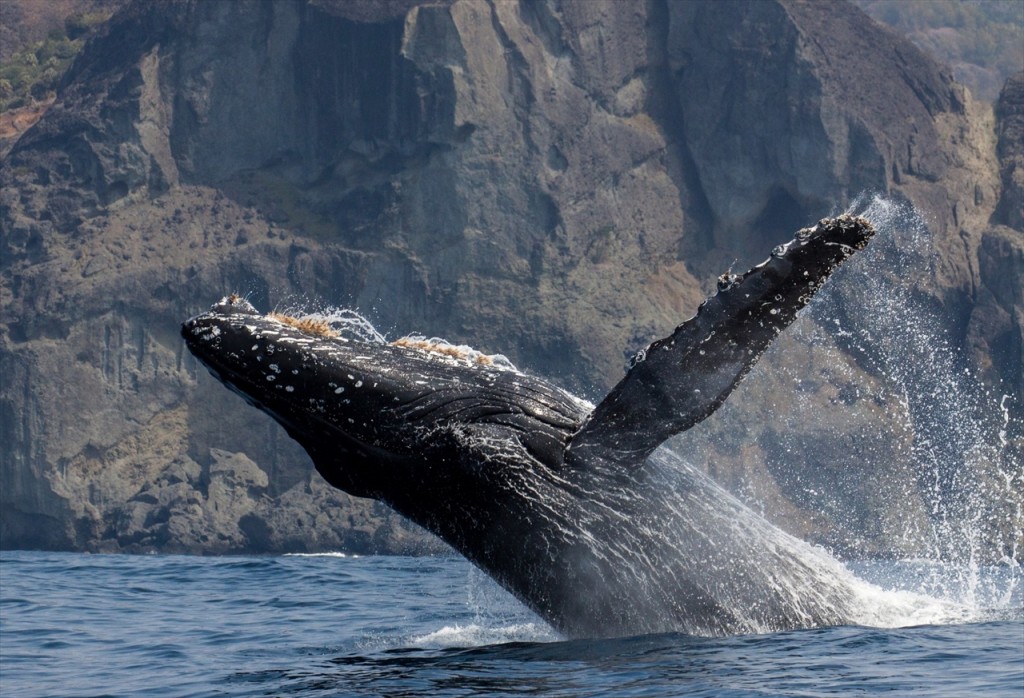
the Jump of humpback whale
Ogasahawa island chain is a solitary island chain in the 1000km away ocean to the south of Tokyo. There is no scheduled flight to the islands but shipping services which take about 25.5 hrs. On the deck you can enjoy the view of floating cloud, the view of distant flight of flying fish, and the sun setting view into the majestic horizon. Since the regular service is once in a 6 days, you will need, at least, 5 nights at the islands.
Ogasahawa island chain consists of about 30 islands of all sizes including 2 inhabited islands, they are Chichijima and Hahajima – “Chichi” refers Father and “Haha” refers Mother. Chichijima has the area about 24? with the highest and climb-able peak of 319m, and the population is about 2000. Chichijima is the calling port of the shipping liner from Tokyo. Hahajima is another 2hrs 10mins away from Chichijima by vessel and there are about 500 inhabitant.
It has mild climate through a year with average temperature of 23℃. It should belong to subtropical climate zone.
What is remarked within the history of Ogasawara should have been the occupation by the US force after WWII, and its retrocession to Japan in 1968. The 23 years occupation time should have greatly affected the life in the island where has been in nifty American style or atmosphere that can not be seen in other islands. It is also a feature of the island that there are many vigorous young.
The activities that you can challenge.
Try this ! : Snorkel and Dolphin swimming tour (in Chichijima / Hahajima)
You can visit a rare snorkeling spot only reachable with our guide. It is a good opportunity to learn better about Ogasawara. It will be an experience of snorkeling in a beautiful and transparent sea with a lot of fish and coral.
You may be able to swim together with wild dolphins in Ogasawara. They may come closer if you could swim calmly. You should be naturally wrapped up yourself by a tender affection when you meet their gaze.
Whale watching (in Chichijima / Hahajima)
We call the characteristic colour of the Ogasawara ocean “Bonin blue”. Humpback whales can be seen in the blue ocean through January to May, while cachalot can be seen through the year. Please go full extent through about the ocean with watching blow mountains among waves, and with searching the huge tail fin. You may be able to watch a dynamic jump of humpback if you were lucky.
Night tour (in Chichijima)
Let ‘s go searching Ogasawara megabat – a protective species in the evenfall. You may encounter a hunting view of the megabat and observe closely them eating hunted if they sit a while near by.
Also you can enjoy searching “green pepe” a mushroom with bioluminescent and emitting a pale green light. And let ‘s find other nocturnally active creatures.
One of the attracts at the night tour is to feel the moonlight or twinkle of stars in the real dark night derived from a solitary island in the sea.

Ogasawara megabat
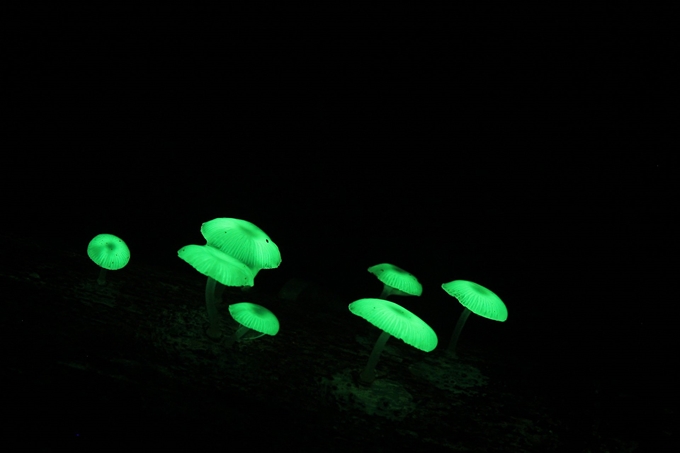
Green Pepe
Landing tour to Minamijima – a coral made uninhabited island (Chichijima)
Minamijima is a raised coral reef. It is a submerged karst that formed in sea water after erosion. “Lapiez” – pillar shape limestone with acute top are scattered around. There are 3 ponds formed after the corruption of “doline”- calcareous cave.
The shells of land snails are scattered around white sand beach of Ohgiike pond – one of the 3 doline. They are the fossil of Hirobeso Mandarina which became extinct about 1000 years ago. It should have been an endemic specie lived in the forest at one time.
Minamijima is a habitat of “Katsuodori”- Brown boody. They migrate to the island in April. June and July is the nestling time. They fledging in September ? November for next destination. Though their territory usually is on the untouched bold cliff, their singing is echoed throughout the area at bleedling time.
*Minamijima is off limits during early November till early February (except end/new year time) every year due to the restitution of vegetation.
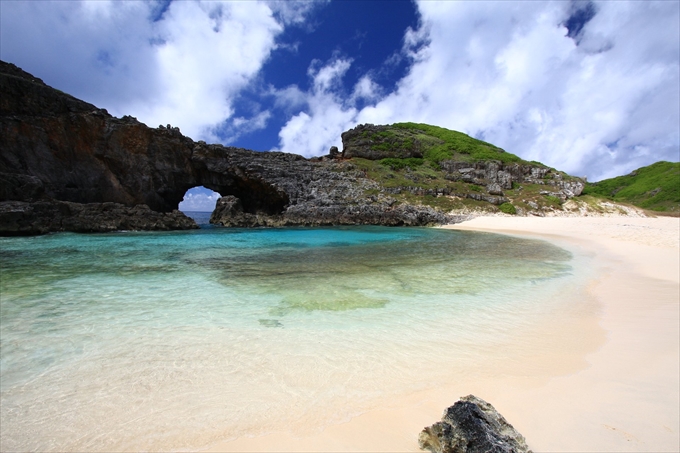
Ohgiike of Minamijima and the sand beach where Hirobeso Mandarina are scattered around.
Nature trekking going through the forest with huge ferns (Hahajima)
The deep forest with huge ferns around Mt. Sekimonsan is an important area of high degree of native bush mainly with moist tall woods. The view would provide you an illusion as if you were in ancient dinosauric time. You will also find some limited habitat of endemic only in Hahajima creatures.
One the really rare creatures is Ogasawara Okamonoaraigai (a radix auricularia). It is a land snail with 1.5cm length and looks jelly like snail. Since they usually inhabitate in mist forest and thus they do not need to protect themselves from drying, it has been explained that the shell has become reduced in size.
There is a strict control to visit around Mt. Sekimonsan because of the rarity. You are obliged to go with an official guide but a guide can take max 5 visitors at one time and total visitors must be less than 50 per day.
*The area is off limits between October~February due to the bleeding period of Japanese wood pigeon. You may hike only mountain ridge route in March.
A suggested plan
| day 1 | Stay in a vessel |
|---|---|
| day 2 | Arrival at Ogasawara |
| day 3 | 1 day forest trekking tour |
| day 4 | dolphin swimming tour |
| day 5 | night tour |
| day 6 | visiting Hahajima |
| day 7 | 1 day in forest of Hahajima |
| day 8 | whale watching in Hahajima |
| day 9 | extra or backup date |
| day 10 | extra or backup date |
| day 11 | departure in the afternoon and stay in the vessel |
| day 12 | arrival at Tokyo in the afternoon |

